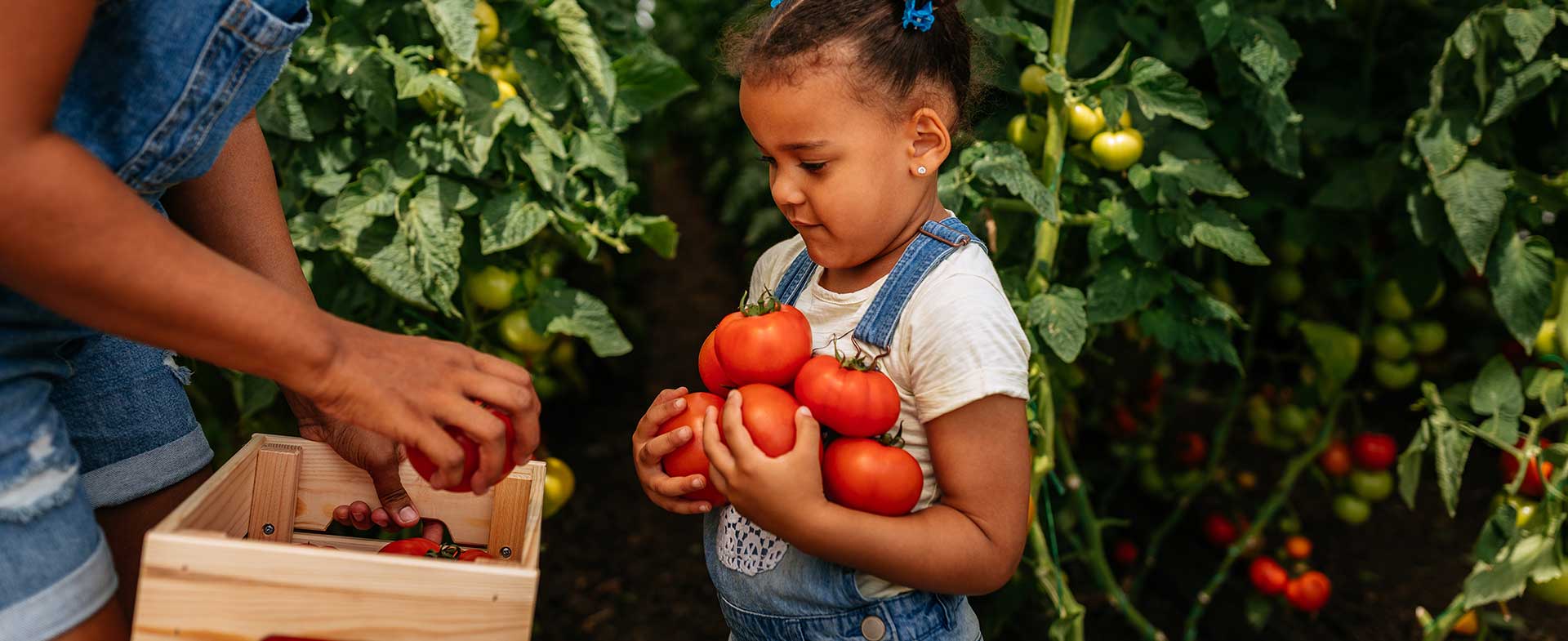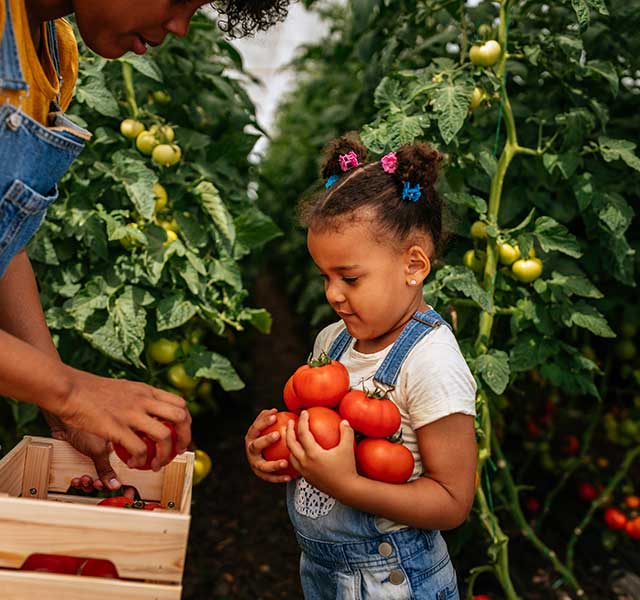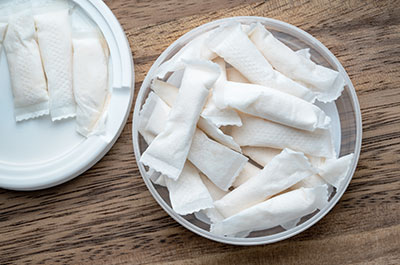It can be challenging to get kids to eat fruits and vegetables at all, let alone the five servings recommended daily. But starting a garden can teach kids about where fruits and vegetables come from—sparking their interest and taste buds.
“Your kids are more likely to eat fruits and vegetables that they’ve grown. Gardening is a great family activity that teaches kids about responsibility, problem-solving and how to take care of their environment,” says Amanda Krieg, RDN, a registered dietitian at Henry Ford Health.
How Gardening Teaches Kids About Healthy Foods And More
“Studies show that eating more fruits and vegetables boosts children’s physical and mental health, but many kids aren’t familiar with various fresh fruits and vegetables," says Krieg. "Gardening is a fun way to introduce your kids to fresh, home-grown fruits and vegetables.”

Meet With A Dietitian
Gardening offers many other benefits as well, including helping kids learn about:
- Enjoying nature: Gardening gives your family a chance to take a break from screens, get some exercise and enjoy the outdoors.
- Farming: Most foods we eat begin as crops. Starting a garden can teach your children how fruits and vegetables are planted, grown and harvested. You can teach your children the importance of caring for their environment by avoiding pesticides and chemical fertilizers.
- Responsibility: Children of all ages can work in the garden and gain a sense of accomplishment, caring for a plant from seed to ripe produce. Younger children can help dig holes, plant seeds and water growing plants. Older children can help design a garden plan.
- Problem-solving: Plants sometimes don’t grow as expected or need special attention. For example, children can help decide how to stake up a leaning tomato plant. They can learn which plants need extra water in the hot sun. Others may need less water if their leaves have mildew.
7 Tips For Starting A Garden With Your Kids
“You don’t need to have a large yard or budget to create a garden with your children,” says Krieg. She suggests following these steps to get started:
- Gather gardening information: Contact your local community extension education program to learn about gardening classes for children. Take your children to visit a community garden or local farmer’s market. Many gardeners and farmers enjoy teaching kids about the foods they grow and tips for gardening in your area.
- Start small: Choose small containers such as a plastic cup, juice box or egg carton. Clean the container and drill or poke holes in the bottom for drainage. Let your kids decorate the container before you start planting. If you create a garden in your yard, begin with a small plot that’s easy to manage.
- Select a variety of seeds: You can purchase seeds or gather them from your fruit and vegetable scraps. Have your kids examine the size and texture of different seeds. Let children plant seeds for fruits or vegetables they like and those they want to try. Plant some produce that grows faster, such as herbs, so your kids can see the fruits of their labor sooner.
- Add soil: Purchase or gather dirt to fill each container. Many communities offer free ground testing to ensure your soil is pesticide-free and fertile. Let kids use their fingers or a small shovel to create a bed for their seeds, plant them and cover them with soil. If you’re planting a garden in your yard, choose an area away from where pets use the bathroom.
- Let the sun shine: Place containers near a window or plant in an uncovered area in your yard to ensure plants get enough sunlight.
- Nourish your crop: Keep the soil moist using water from a tap, hose or filter. Avoid using standing water, which may have bacteria that could contaminate your plants. Teach your kids how to fertilize plants naturally and minimize food waste by starting a small compost bin for fruit and vegetable peels.
- Harvest when ready: Use clean hands or gloves to gather your fruits and vegetables. Clean excess dirt from your produce to avoid bringing it into your kitchen. Store fruit and vegetables in a cool, dry, pest-free space. Wash all produce with water and a scrub brush. Avoid using dish soap or other cleaners, which may leave a residue or break down the outside of your produce.
“Let your kids suggest ways to include fruits and vegetables into their favorite dishes. Use lettuce and tomatoes on a hamburger or sandwich. Use blueberries to make whole-grain blueberry pancake muffins. Your kids will enjoy helping in the kitchen, finding fun ways to add fruits and vegetables into their meals,” says Krieg.
Amanda Krieg, RDN, is a registered dietitian at Henry Ford Health.



